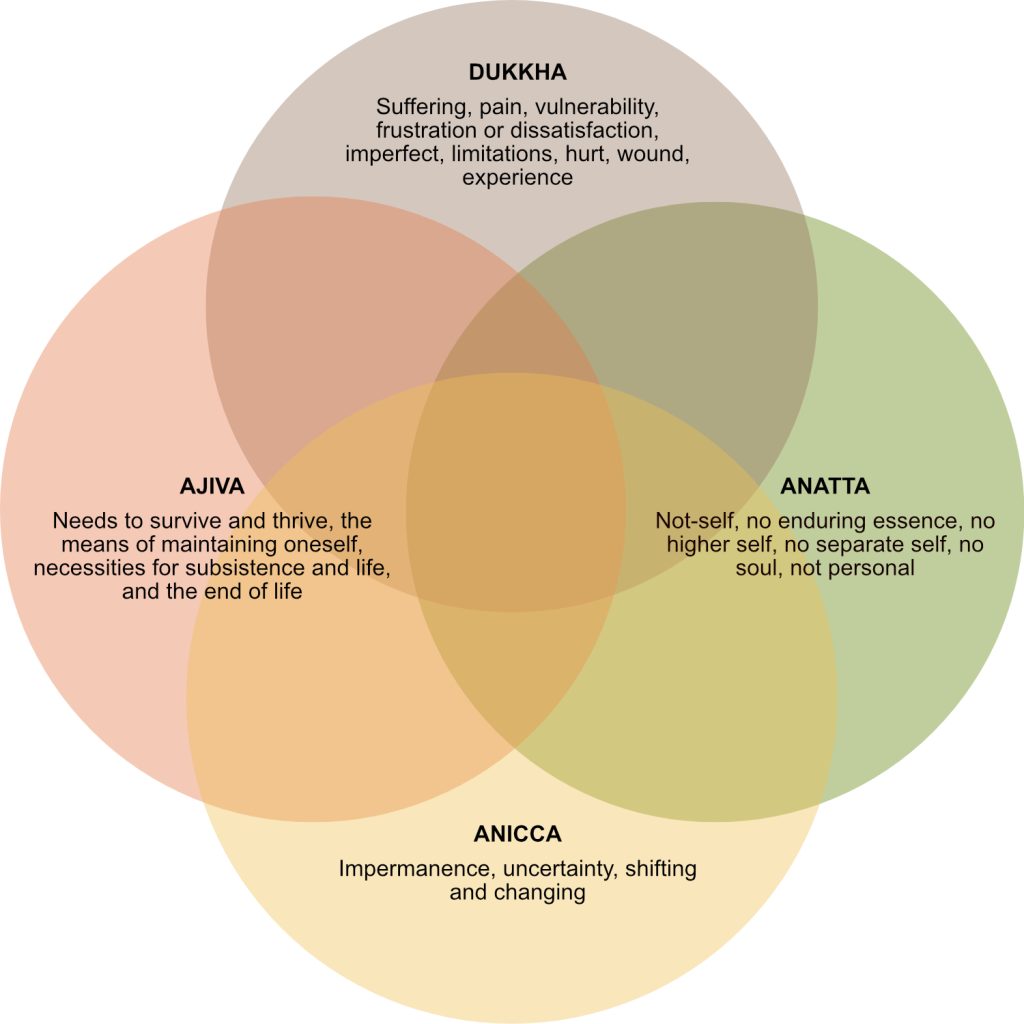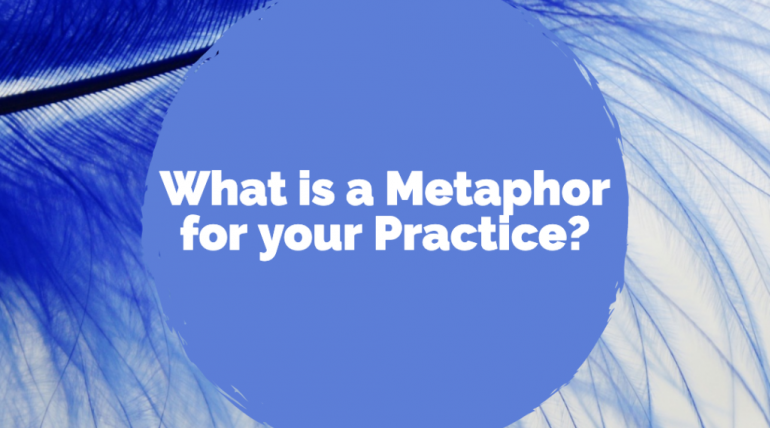Coming to terms with being human
By Linda Modaro, Sati Sangha
My practice has changed since I have discerned, untangled, and validated a range of my human needs distinct from tanha [thirst / desire / craving] and from anatta [no self]. This direction has brought my dharma practice back down to earth, back into the world.
Buddhists teachings point us towards three characteristics that are common across everything in sentient life. These are known as the three marks of existence, and I use a variety of translations when teaching depending on the situation:
dukkha as suffering, pain, vulnerability, frustration or dissatisfaction, imperfection, hurt, limitations, wounds, experience
anatta as no self, not-self, no enduring essence, no higher self, no separate self, no soul, not personal
anicca as impermanence, uncertainty, shifting and changing
Here in this teaching, I will posit a fourth mark – our needs to survive and thrive. Although there is no Pali equivalent, ajiva might be the closest when I translate it as “the means of maintaining oneself, necessities for subsistence and life.”
Like unraveling an existence-knot, the diagram below tries to show connection between each mark with an open circle. The circles can be interchangeable; most of us are aware of at least one of the marks in our experience, but it is not always obvious how they interrelate with our senses and the experience of being alive. Or how to fold them into an ethical practice. I will write more on this over the next few months.
If you are curious about my addition, I hope you will make some associations and see how a fourth mark of existence fits into your understandings of the Buddhist teachings. If you would like, share your thoughts with me, and with others when you have conversations about dharma practice.
Because as we all are, this too is a work in progress.

Thanks to Wikipedia posting translations from the monastic communities. Thanks to Nelly Kaufer, Stephen Batchelor, Sue Hamilton, Polly Young-Eisendrath, and Jason Siff for their translations, which have influenced mine. Thanks to Janet Keyes for her dharma editing support.

